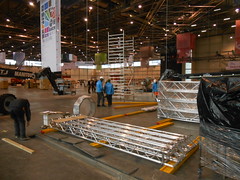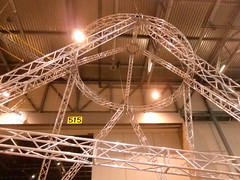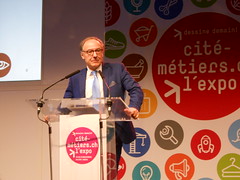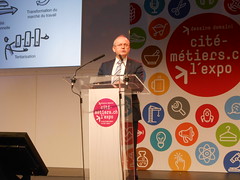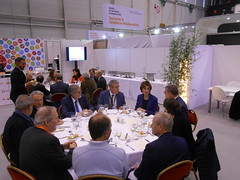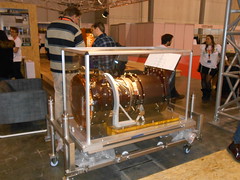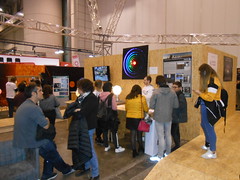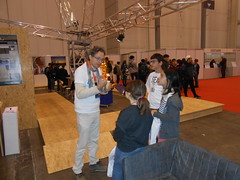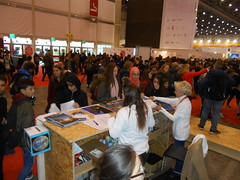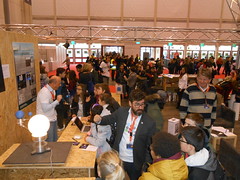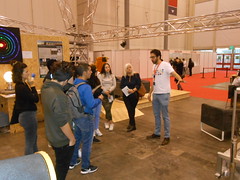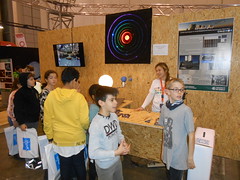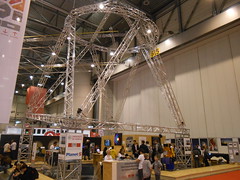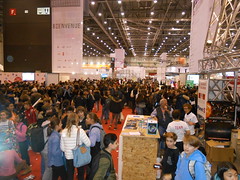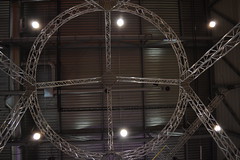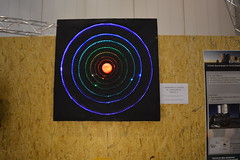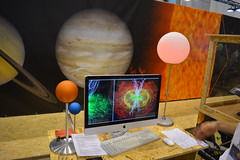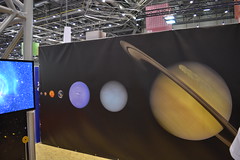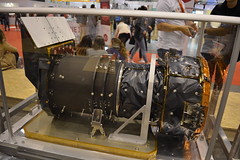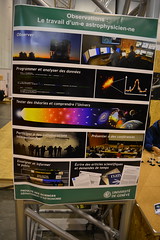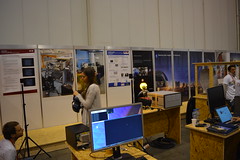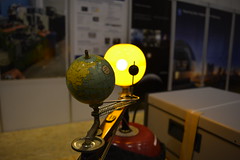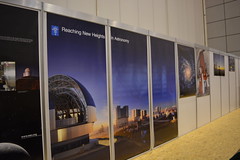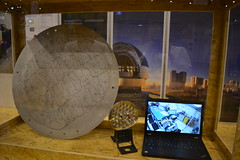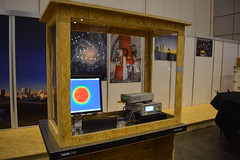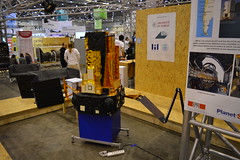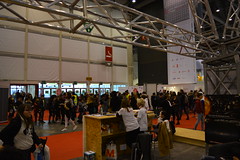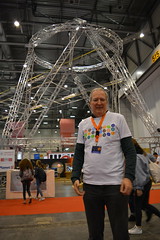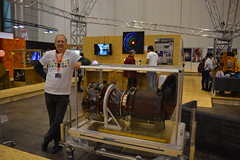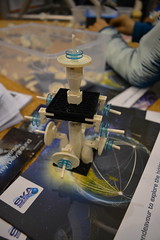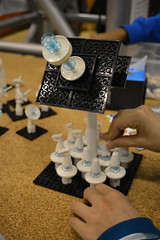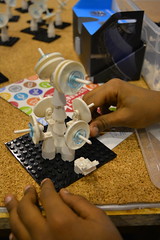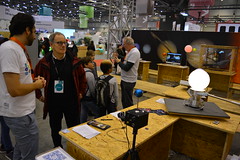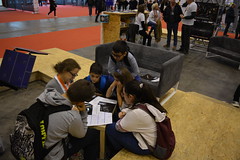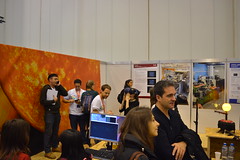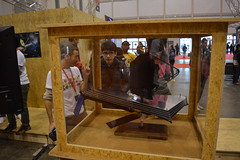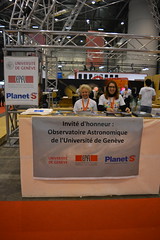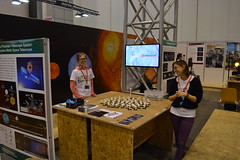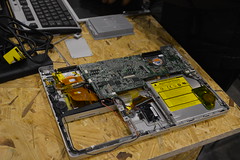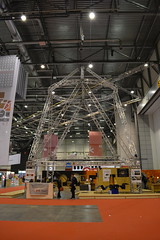The VLT at Palexpo in Geneva
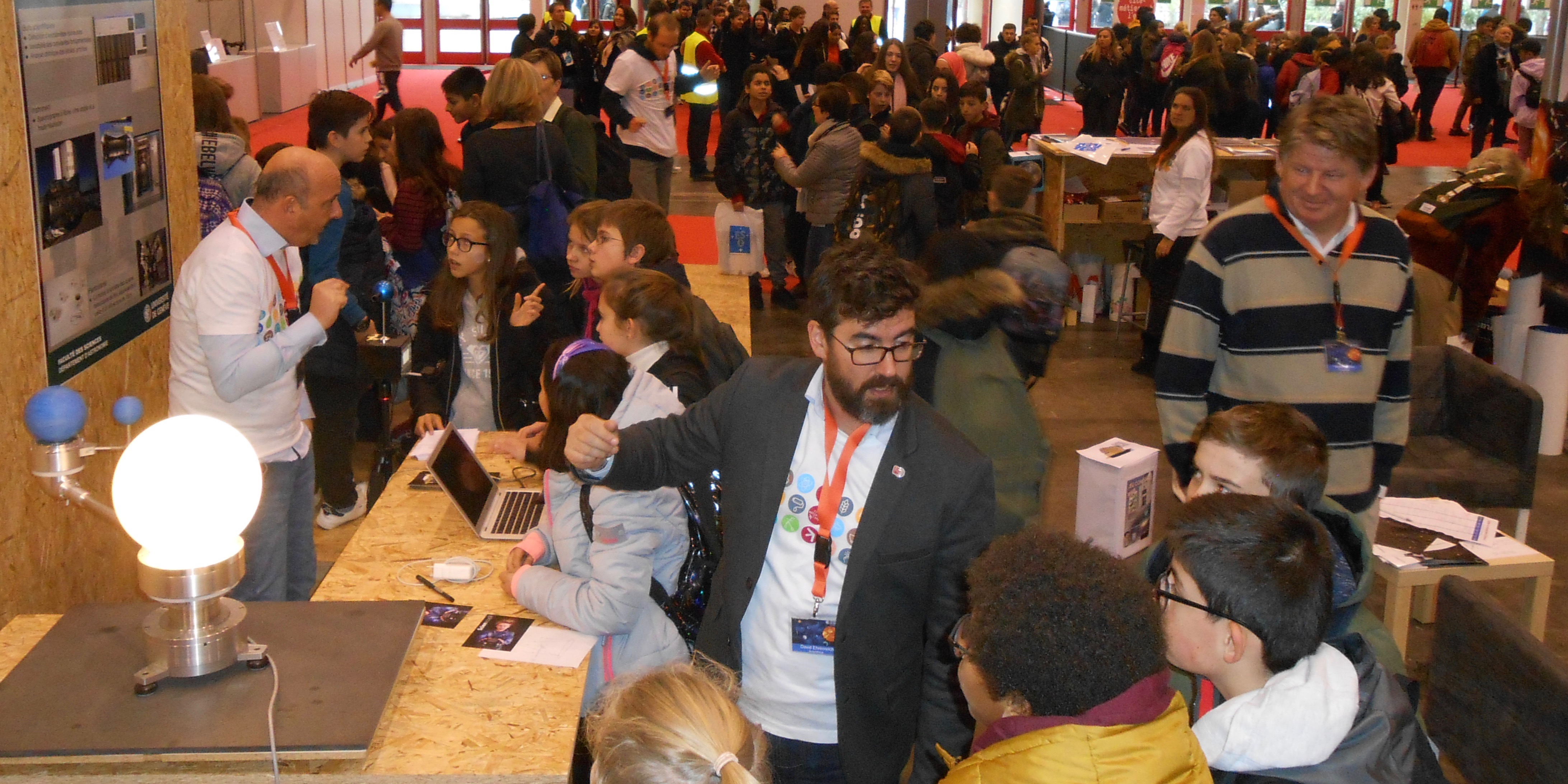
“When last year the organizers of the Cité des Métiers asked us whether the astronomy department of the University of Geneva would accept to be the guest of honour of the exhibition, we immediately realized that the visibility offered by such an event represented an opportunity to be seized. The rest proved that we were not mistaken, quite the contrary,” explains Stéphane Udry, co-director of the NCCR PlanetS. The Cité des Métiers is an event where all the economic players in the Geneva region (including neighbouring France and the canton of Vaud) meet at Palexpo near Geneva airport to introduce young people to the jobs carried out in their companies. This 27,000 m2 large exhibition that is organized by the Department of Public Education, employers’ unions, and trade unions takes place every three years and attracted this year 92’000 people in 6 days.
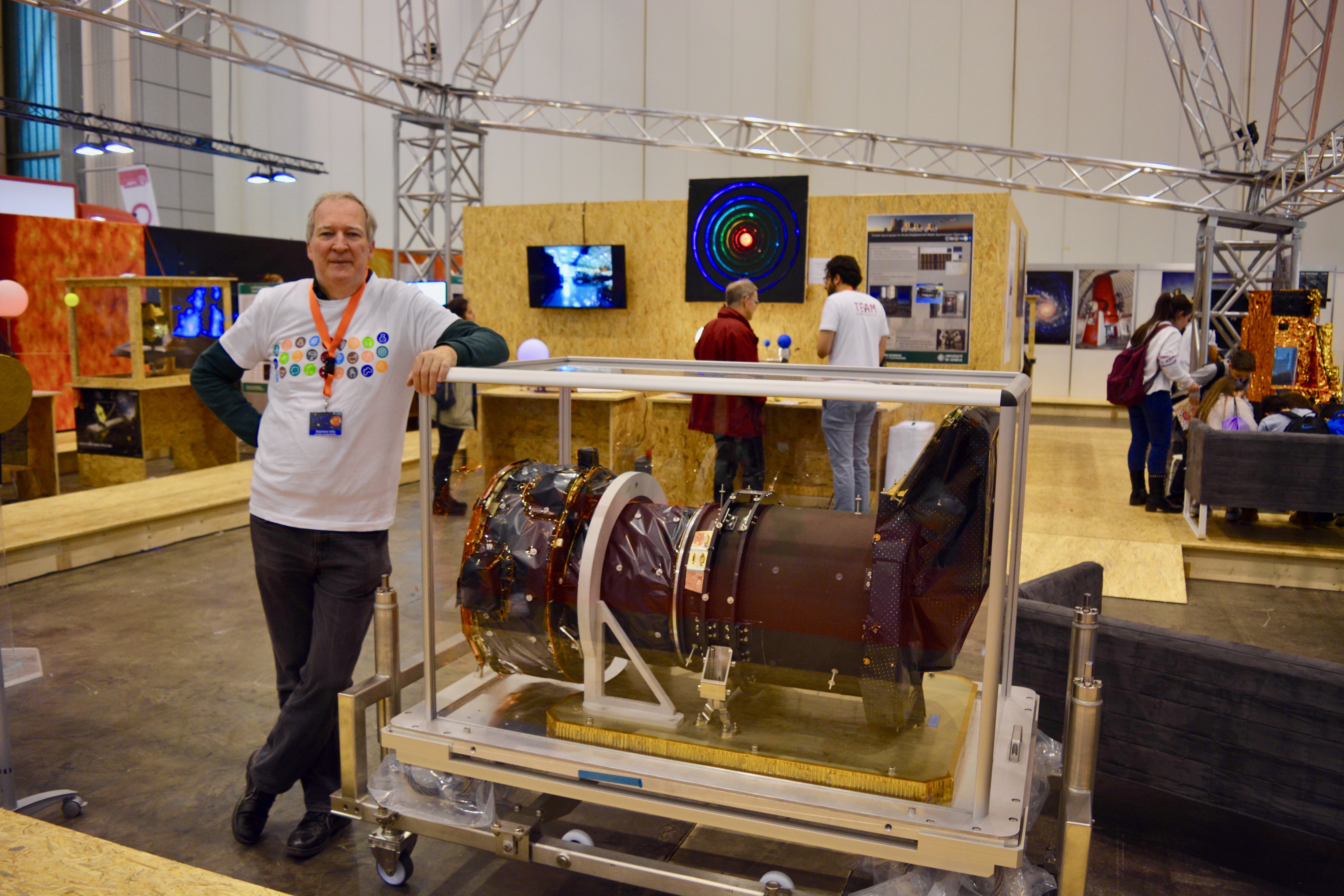
Stéphane Udry with the structural and thermal model (STM) of CHEOPS. (Photos Thibaut Roger and Pierre Bratschi)
“During the regularly organized visits at the Observatory, we realized that the vast majority of people are unaware of our activities and even of our existence,” says Stéphane Udry, the director of the institute, “an exhibition like that of the Cité des Métiers is therefore a way to introduce people to all the professions related to our activities, from robotics to optics and mechanics, not to mention astronomy.” The astronomers of the University of Geneva have also decided to reserve a major surprise for the public. “We wanted to demonstrate in a striking way what a large telescope is,” says Stéphane Udry, “so we recreated the structure of the VLT on a 1:1 scale.” A task that seemed overwhelming and which, thanks to the tenacity of the employees, finally came to reality. This exhibition represented a great occasion to highlight the local and national synergies developed in this sector of activity. The Department of Astronomy of the University of Geneva has called on the University of Geneva, PlanetS and the EPFL astronomy laboratory to participate in the stand. “They all answered promptly without hesitation,” says Stéphane Udry, happy that such collaboration between institutes of the country can be achieved.
The structure of the VLT was erected in one day and gives an impression of its gigantic size that only a visit to Paranal can surpass. “It’s a bit like when you look at a picture of the Eiffel Tower, it’s beautiful on paper but it never gives the impression felt when you’re at the foot of it,” says Pierre Bratschi, a member of the PlanetS communication team, “and it’s easier to come here than to go to Chile.” Likewise, another “star” of the stand, the Structural and Thermal Model (STM) of CHEOPS, lent for this very occasion by the University of Bern. This test model of the first ESA satellite built under Swiss leadership helped people understanding what a satellite really is. Meeting with the STM made a strong impression on the public, both visually and in terms of Switzerland’s ability to design and build such instruments.
The large attendance was captivated and appeared to be genuinely interested, waves of children followed one another to the Observatory’s stand before continuing their visit. “The visit is mandatory for the pupils of the canton who are between 11 and 16 years old” explains Nicolas Aune, President of the Cité des Métiers, “we have organised more than 600 bus trips together with public transportation of the canton to be able to move around the about 30,000 children who come to Palexpo”. Most of these 30,000 children then come back on weekends or during the two evenings with their parents to show them what they are interested in. The stand is full during this period and the 20 collaborators from the Universities of Geneva and Bern and EPFL who are permanently on the stand are subjected to a barrage of questions. “I didn’t stop talking for 4 hours,” says Gaël Ottoni, a doctoral student at PlanetS with a bottle of water in his hand.
“The exhibition and our stand met with a magnificent success,” says Stéphane Udry, “a success that we owe in large part to the efforts of the 90 collaborators from Geneva, Bern and Vaud who showed a commitment that merits recognition, and who knows? Maybe in 10 years we’ll come back with the ELT! “.
